Review: LG G Flex
Jan 30, 2014, 10:30 AM by Eric M. Zeman
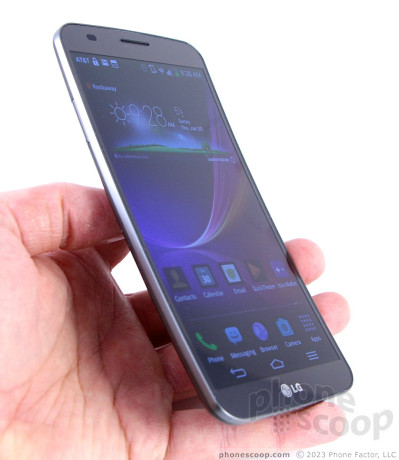
The LG G Flex is a curiosity with its curved design. This phablet-sized Android smartphone offers plenty to like, but it manages to fall flat in a few areas. Phone Scoop looks at both the AT&T and Sprint models in this full report.
Form
Is It Your Type
The LG G Flex, one of the first curved and flexible smartphones, is a big, bold statement. The device strays from traditional design with its unique shape and features. If you're the sort who likes to take risks, the G Flex may be for you. Here's why.
Body
I had strong reservations about the G Flex's curved design heading into this review. I was worried the shape would come across as a gimmick, and the size would make it unwieldy. After using the device for a while, I've come to the realization that some of my fears were unfounded. Instead, I've discovered entirely new reasons to question LG's thinking.
The G Flex is a very big phone. It's larger than Samsung's Note 3, but a hair smaller than the HTC One max. The size puts it in the phablet category and necessitates two-handed use. It's all but impossible to use with a single hand. As far as looks go, the G Flex isn't bad. From certain angles, it is hard to tell the device is curved at all. The front face is clean and free of clutter-y buttons. The curved sides have a two-toned look thanks to differing shades of gray. The back is a wasteland of glossy, fingerprint-collecting plastic. Despite the curve, the G Flex looks rather plain.
The device has a curved shape that LG claims helps fit the human body better than a flat phone does. Does that claim really hold up? Yes and no. When used as a phone, there's no question that the microphone is a bit closer to your mouth. I'd put the distance at about an inch closer when compared to a similarly-sized phablet. Does this lead to improved call performance? Not as far as I could tell. The G Flex feels awkward to press up against your cheek thanks to its size. The Flex is very wide, which makes it hard to grip tightly. It's also fairly thick, or at least thicker than competing devices. The curve does not make it any easier to hold or fit in your hand better - any such claim is a load of bunk.
I was worried that putting the G Flex in my pocket would be uncomfortable. As long as the screen is facing your leg, the G Flex is surprisingly pleasant to stuff into your pocket. I mean, it's still a huge phone, but the curve does help a little bit. (It is worth point out that I'm 6'1" and 200 pounds. People who are smaller than me may find the phone isn't as comfortable in their pockets.) The same goes for stuffing it in your back pocket (as long as the screen is facing your rear-end). Despite the flexibility of the G Flex, I wouldn't recommend sitting with it in your back pocket. The curve definitely does not help when the device is placed on a flat surface, like a table or desk. The G Flex wobbles when you trace your finger up and down the screen, which can make it harder to type messages or browse through apps.
The curved shape may help out here and there, but the G Flex's enormous dimensions really negate any benefit.
The 6-inch display consumes most of the G Flex's front surface. There's a slit in the glass above the screen for the earpiece speaker, and LG's logo is emblazoned below the screen. The edge where the screen and sides meet is raised in a sharp lip. I found the edge uncomfortable when holding the phone and, as far as I can tell, there's no reason for it to be there. There are no buttons, physical or capacitive. Instead, the G Flex uses on-screen buttons that come and go as needed.
Like the LG G2, there are no buttons along the outer edges of the G Flex. Instead, the screen lock button and volume buttons are placed on the back of the phone. As when I reviewed the G2, I couldn't get used to the G Flex's button placement in the short term, though over the course of several weeks or months I assume it would eventually feel natural. The buttons are located directly beneath the camera module, closer to the top of the G Flex's chassis. This means if you're gripping the phone closer to the bottom, you have to reposition your hand to reach the buttons. I found this annoying. The trio of buttons includes the screen lock, with the volume keys above and below it. The screen lock button is raised a bit, making it possible to tell which button is which without looking. The screen lock button offers decent feedback, but the volume keys do not. They just don't feel that great to press, and make an unattractive clicking sound. The screen lock button has a multi-color notification light inside and can be used for notifications if you want. You can also turn the light off.
Because LG put the screen lock button on the back and also got rid of the physical Home button on the front, there's no obvious way to wake the G Flex without picking it up. The Knock On feature - which lets you double-tap the screen to wake the device or put it to sleep - is activated by default. Thanks to the button placement, Knock On is essential.
The G Flex is flexible, but take that descriptor with a grain of salt. The curved shape can withstand pressure and can flatten out to a small degree with no fear of damage. It's not like you can fold it in half. The phone creaks like crazy when you flex it. Instead of calling it flexible, I'd say it's less likely to break if you sit on it. Don't go twisting it on purpose to see how far it'll go before snapping.
Both the stereo headphone jack and the microUSB port are tucked into the bottom edge of the G Flex. The battery is not removable and the device doesn't support microSD memory cards. The SIM card can be ejected/inserted through a tray that's buried in the right edge of the phone.
At this point, I'm not sure what to make of the G Flex. It's an odd device, no doubt. I can't say the curved shape does anything to help improve usability, though I can say the large size is not entirely friendly. The G Flex is intimidating, and at times off-putting.
Performance
Screen
The G Flex has a 6-inch display. The display panel itself is flexible, which is what makes the G Flex's curved shape possible. LG typically uses in-plane switching LCD panels for its devices, but that's not the case with the G Flex. The G Flex uses an OLED panel and it offers just 1280 x 720 pixels. I fully respect that engineering a flexible display is difficult and applaud LG for taking such a chance. At the end of the day, though, this screen kind of stinks. Choosing only 720p for a 6-inch screen means the G Flex has a low(er) pixel density when compared to many other devices. Pixels were readily apparent to my eyes and some text and icons looked fuzzy at times. (To be fair, I said the same thing about the Samsung Galaxy Mega, which has a 6.3-inch 720p screen.) The G Flex's screen offers plenty of brightness, but there's a dramatic color shift (whites turn blue) when the device is viewed from an angle. You have to look at the screen head-on to see accurate colors. Last, LG pitched the curved screen as ideal for viewing videos. For my money, the experience was no different than watching video content on any other large-screened device.
Signal
We tested both the AT&T and Sprint versions of the LG G Flex.
AT&T: The G Flex had no trouble finding and connecting to AT&T's LTE 4G network. Nearly everywhere I travel in The Garden State these days boasts AT&T LTE, so I didn't see the G Flex drop down to HSPA+ anywhere. It remained on LTE throughout the review period. I thought calls were a little slow to connect, even in strong coverage areas, but they always connected on the first dial. The G Flex didn't drop or miss any calls. Data speeds on LTE were consistently good, no matter what the signal bars said.
Sprint: The G Flex performed on par with other Sprint devices that I've tested in the greater New York metro area. That means it remained on 3G most of the time, but waffled onto LTE here and there when available. Call set-up times were much quicker than on AT&T, even when the phone showed zero bars of coverage. When LTE was available, the G Flex connected to 4G and data speeds were noticeably quicker than over 3G. I didn't have any trouble making or receiving calls with the G Flex on Sprint's network.
Sound
AT&T: Calls made through the AT&T G Flex were quite excellent. The earpiece produced clean, loud voices that I found pleasant to listen to. I noticed that it was best to keep the volume above the 50% mark most of the time. I had no trouble hearing calls in noisy public spaces as long as the volume was set up all the way. Those with whom I spoke through the G Flex said I sounded good, but not great. The speakerphone also produced loud, high-quality calls. You could certainly get away with using the G Flex in a busy office or your home.
Sprint: Calls made through the Sprint G Flex were good, but not as good the AT&T variant. The earpiece produced plenty of volume, but there was more background noise and interference from Sprint's network. I was able to hear all those I called just fine, but had trouble understanding people from time to time thanks to the fuzzy sound. People I spoke to via the G Flex said I sounded OK. The speakerphone offers good volume, but the quality of calls coming out of the speaker left a little to be desired. I'd be more careful in seeking out a quiet spot to use the Sprint G Flex as a speakerphone.
Ringers and alert tones from both variants were a hair short of excellent. I was able to hear the G Flex most of the time it rang or beeped at me, even if I was several rooms away. The vibrate alert is OK, but could be better.
Battery
At 3,500 mAh, the G Flex's battery is among the biggest inside a smartphone. In our time with the device, we can say that it proved a capable power source. The G Flex had no trouble lasting well into a second day on a single charge, even with heavy testing. The 720p resolution probably helps a little bit, as the G Flex has more than a million fewer pixels for the processor to worry about than devices with 1080p screens. Using the G Flex on LTE didn't have any noticeable impact on battery life. Power users shouldn't have any issues getting a full day from the G Flex with power to spare.
Basics
Menus
The G Flex runs Android 4.2.2 Jelly Bean with LG's heavy-handed user experience dropped on top.
The lock screen is fairly flexible. It can be set to show only the clock, or the clock plus shortcuts and notifications. Users can choose to add a password of some sort, as well as current-location weather updates.
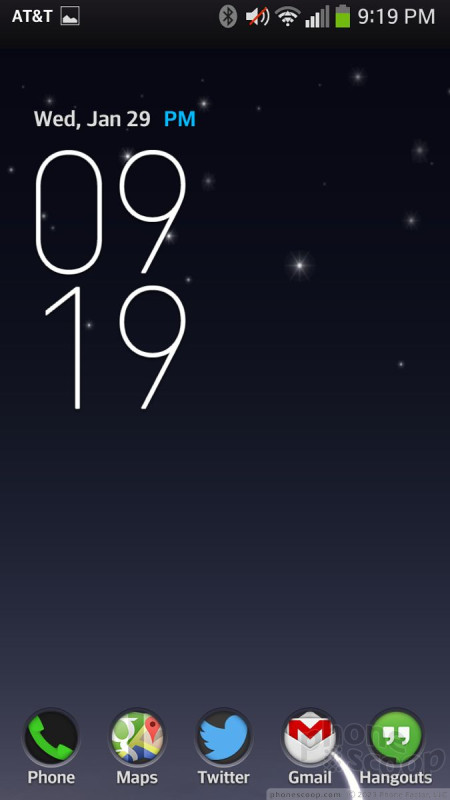
There are three home screen panels active out of the box (five on the Sprint version). Two are littered with widgets and shortcuts, but of course all of them can be modified in any way the user sees fit. There's a dock at the bottom of the screen for your four favorite apps, plus the app menu.
The pull-down notification shade provides shortcuts to control the wireless radios as well as brightness, rotation, sound, and LG's QSlide apps. These controls, however, take up half the screen, leaving less room to view the actual notifications. At least the G Flex allows owners to choose which toggles appear in the notification shade, though I'd rather omit some of the controls so I can see more of my notifications.
The main menu is a grid of apps. LG offers plenty of flexibility to customize it. You can view the main menu with large icons (default) or small icons to fit more apps on each individual page. You can sort apps alphabetically or via install date. You can't, however, view them in list form. Apps can be hidden from view (though they remain installed), and there's a tool that lets you completely delete all the carrier-branded apps right from the main menu page.
Since there are no physical home screen buttons, the Back, Home, and Menu buttons appear and disappear as needed at the bottom of the screen. Like the G2, the G Flex allows you to pick from 6 different control button configurations, including some three-button and some four-button configurations. Some have the Back button on the left, others have the Back button on the right, and so on. The four-button configurations add in a tool that lets you access the notification shade without reaching for the top of the screen.
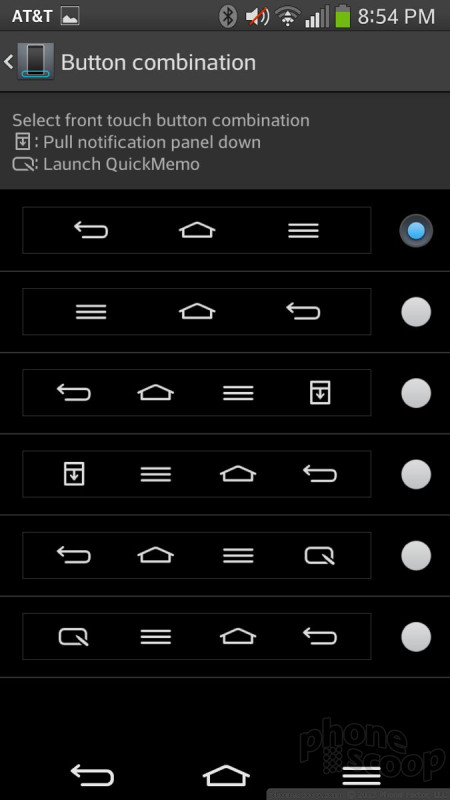
Most Android devices have an easy-to-use Settings menu that's laid out on a single page. Rather than take that approach, the AT&T variant Settings menu has been broken down into four separate tabs. The four tabs in the Settings menu are Networks, Sound, Display, and General. I find this arrangement to be annoying. The Sprint G Flex uses the more traditional single-page layout.
The G Flex also includes the multitasking tool from LG called Slide Aside. It's an optional way to handle multiple open apps at the same time. Essentially, you use a three-finger gesture to push full-screen apps left to set them aside for later use. I found this feature worked better on the G Flex than the G2, perhaps thanks to the G Flex's larger display.
Users can tweak most facets of the G Flex. For example, the G Flex includes a half dozen different fonts and even six different font sizes. There are two themes preinstalled, the notification LED can be customized, wallpapers can be changed throughout, and so on.
As far as performance goes, the G Flex uses the venerable Snapdragon 800. The 800 is a quad-core chip that delivers excellent computing power and battery life. I didn't notice any problems with the G Flex, and the exceptional battery life proves the 800's marketing claims are no lie.
Calls and Contacts
The software dialpad is large and provides tabbed access to call history, contacts, favorites, and groups. In-call options run the standard, such as add a line, send to Bluetooth, hold, reject with message, or mute. You can also open the note pad and messaging apps, or toggle on/off noise reduction (which makes calls clearer for those with whom you speak.)
LG's Answer Me feature appears to be absent. On the G2, Answer Me automatically answered phone calls as you dragged it out of your pocket and raised the phone to your head. In its place, the G Flex lets you set the phone to automatically answer all calls after X seconds. The idea, I suppose, gives you several seconds to dig the phone out and then have the call connect without pressing any buttons. The G Flex can also be set so that ringers (or alarms, etc.) are silenced when the phone is flipped over.
The phone app is one of the QSlide apps. There's a button in the phone dialer that minimizes the phone app, but leaves it open and running on top of other apps. This means you can always have the phone controls front and center while performing other tasks.
The contacts application is as powerful and customizable as ever. There are the usual home screen shortcuts for quick access to select contacts, as well as a nice widget for a collection of your favorites. The bigger widget lets you access your top 20 contacts and gives you a spiffy UI for interacting with them on the home screen.
Within the contact app itself, you can choose which accounts it syncs with and/or displays, how contacts are arranged, and easily lump them together into groups. As with the phone, the contact app can be minimized as one of the QSlide apps and left running on the home screen or on top of other apps if you want.
Messaging
The G Flex runs the same set of native Android messaging apps that we've all come to know and love. The capable Gmail app is on board, as is a generic email application for use with other services. The G Flex ships with Google+, of course, and Google Hangouts, which combines SMS, MMS, IM, and video chatting in one app. There's also a bare-bones SMS client if you want to keep your text messages separate from your instant messages. This bare-bones client is also available as a QSlide app if you want to keep it handy all the time. Both Facebook and Twitter are preinstalled.
AT&T's Messaging app is available on the AT&T version. It's an all-in-one app that lets you send SMS, as well as Facebook and Twitter messages from a single app.
Similarly, Sprint has its own catch-all messaging app installed called Messaging+. It works fine for organizing message threads.
Extras
Media
Both the AT&T and Sprint G Flex variants come with the stock Android media apps. The Google Play Store is the central location from which to buy, rent, or otherwise access apps, music, movies, TV shows, books, and magazines. The individual Play apps are there to help you consume those various pieces of content. These apps have all been around for a while and function fairly well.
The Flex includes an IR port and LG's QuickRemote application. Set-up takes about 30-60 seconds per device, and you can store up to five different "rooms" (living room, bedroom, your friend's living room, etc.) Each room can then control its own set of devices. The app and IR worked fine. This is a feature I really like.
The AT&T variant has just a handful of third-party apps for media consumption, including Amazon Kindle, Beats Music, a simple MP3 player, and a simple video player. These latter two apps are best for side-loaded content (via USB).
The Sprint version includes CBS Sports, NextRadio, Sprint Music Plus, and Sprint TV & Movies. CBS Sports provides breaking news, video content, and analysis about sports. NextRadio is a streaming music service. Sprint Music Plus is a music store run by Sprint (pro tip: skip it,) and Sprint TV & Movies lets G Flex owners rent/buy movies and TV shows.
Camera
The G Flex's camera, which carries forward many of the features from the G2, can be launched from the lock screen or the app icon. There is no physical camera button. The camera launches quickly.
As with most modern smartphone cameras, the G Flex's software offers two sets of controls, down the left and right sides, though there's still plenty of room on the screen for the viewfinder. The left is where all the interesting settings and features are located. Five quick action items appear here. Four of them can be customized.
In terms of shooting modes, the G Flex offers HDR, Panorama, VR panorama, burst shot and beauty shot. The VR Panorama is similar to Android's Photo Sphere, but it doesn't produce quite the same results. Photo Sphere images are easy to view and share via Google+, but the VR Panorama shots are not. In short, you start capturing images both back and forth, and up and down to creative a massive 360-degree shot of your viewpoint. Burst shot takes 20 pictures in a burst and keeps all of them. Beauty shot is sort of an automatic "Portrait" mode and can be used to enhance skin tones and blur the background when shooting close-ups of people. There's another mode called "Intelligent Auto" that claims to automatically adjust the camera's parameters (shutter speed, aperture, etc.) based on the scene at hand. With Intelligent Auto enabled, you can't choose any of the other shooting modes.
The G Flex also includes a sports mode and something called shot & clear, which lets you erase items from the background (provided you've turned on the shot & clear feature). Dual-shot uses both the front- and rear-facing cameras at the same time to capture a sort of virtual postcard of your face merged with whatever you're looking at. There's also a feature called Time Catch Shot, which saves a short burst of pictures that starts before you actually press the shutter button. This helps you not miss a fleeting moment, even if you're late with the button. But you have to be in Time Catch mode already.
I found all the different modes more or less behave as advertised, though your results will certainly vary.
Beyond the modes, there are tons of normal controls that photogs might expect to find. The settings allow you to adjust the brightness level, the focus mode, resolution/aspect ratio, ISO (or speed), white balance, color effects, timer, and so on. It's a robust set of tools. I like that the tools are all laid out in a single easy-to-see grid and not buried in painful menus and drop-down lists.
Photos
The G Flex has a 13-megapixel sensor that LG says has been improved compared to the G2. The images I captured with the G Flex looked pretty good. I took a handful of shots outside on a late sunny afternoon in the snow, which is a challenging environment given the angle of the light. Despite the various bright/dark spots in my subjects, the G Flex did a good job of getting the right exposure. White balance was generally good, and colors were accurate. I didn't see any issues with focus. Some of the shots had a bit more grain than I wanted to see.
The various shooting modes let you be creative, but they take time to master. The VR panorama mode, for example, takes a lot of practice. The other modes are meant to make certain things more automatic, but it can be clunky to turn them on if you're in a hurry. The most fun is perhaps the dual-shot mode, that lets you insert your face into any shot. The performance of these extra modes varies, but they start with a good foundation thanks to the G Flex's capable sensor.
Video
I was generally pleased with the 1080p HD video I captured with the G Flex. Exposure was good, focus was good, but I saw white balance and grain issues from time to time. That said, most users should be happy with their results the majority of the time. I'd say the G Flex produces YouTube-worthy videos with ease.
Gallery
There are far too many apps for controlling your photos on the G Flex.
First, there's the out-going stock Android Gallery application that's been available on most Android 4.0+ phones for some time. It's easy enough to use and includes tools to edit and share photos.
Second, there's the newer Photos app from Google. This app carries over much of the design and many of the features from the older gallery app, but it ties more directly into users' Google+ accounts. It's a bit easier to use and looks somewhat fresher. It lets users edit photos as well as share them without too much trouble. Photos also has Google's Auto-Awesome feature, which automatically enhances your pictures and turns burst-shots into animated GIFs.
Then there's LG's QuickTheater application. This app automatically pulls in not only the photos and videos you've captured with the G Flex, but those you've uploaded to your YouTube account, as well. This app is mostly meant to be a viewer and/or slideshow generator. It doesn't include editing or sharing functions. If you're in a hurry and want to show people a mix of photos and/or videos, this is the app to use. It has a nicer user interface than either the gallery or Photos apps.
Last, there's a stand-alone video editor. This app is rather light in features, but it lets you trim video clips and paste them together in a rudimentary way.
Apps
Both the AT&T and Sprint G Flex have way too many applications on board. We're talking 70 apps/services, which means about 20 to 30 apps that are pure bloat. Thank goodness the G Flex lets you delete the carrier-installed apps. The G Flex has a finite amount of storage - just 32 GB - of which only 24 GB is available to users. The more apps you can dump, the better.
Bluetooth
The G Flex's Bluetooth radio functioned without issue. I was able to pair it with PCs, headsets, and speakers. Calls sounded OK via Bluetooth, but shy of great. Music sent to stereo Bluetooth speakers was also good, but not great. I've heard better.
Browser
Both the AT&T and Sprint G Flexs include both the standard Android browser and Chrome.
On the AT&T variant, the standard browser has been hijacked with a skin developed by AT&T. The skin forces Yahoo on you as the homescreen, but provides a neat little dock at the bottom of the screen that makes it easier to share/bookmark pages, as well as navigate through web sites. Chrome behaves just as it does on every other Android device. Browsing speeds over AT&T's LTE network were good. I never had any trouble loading web pages, even in my local supermarket, which is usually a total AT&T dead zone.
The browsing experience was a bit mixed on the Sprint version. When LTE was available, the G Flex performed well at loading web sites. Browsing over 3G wasn't nearly as rewarding, and sites were definitely slower to find their way to G Flex's screen.
Clock
The G Flex has a simple digital clock that adorns the lock screen. I could not find a way to alter its appearance. It's white, but big enough that it is visible no matter what else you have on the screen behind it (except for many a snowy wallpaper).

GPS
The Flex comes with Google Maps. Paired with the G Flex's GPS radios, I found Maps to work perfectly. It was able to pinpoint me in less than 10 seconds and to within about 25 feet on both versions.
The AT&T version also packages in the AT&T Navigator app. AT&T Navigator costs $10 per month. AT&T Navigator is fine for plotting directions from point-to-point, but Maps is better for related searches and alternate travel methods (mass transit, etc.). The Sprint version offers TeleNav's Scout app. Scout is free to use. It offers point-to-point navigation in addition to tons of information about local places (gas stations, banks, restaurants, etc.).
Guest Mode
Guest Mode is meant to safely protect the owner's data and settings while lending the phone to someone else (read: a kid.) Guest mode lets people play games or listen to the media player, for example, but not access email, messaging, or settings. It is a cinch to set up and helps keep private info private. The mode can be accessed with a dedicated lock screen code (drawing a "G" on the screen.)
QuickMemo
The G Flex includes the QuickMemo app. QuickMemo lets users capture a screenshot and then open that screenshot in the Notebook app. The Notebook app lets you scribble on the screenshot with various pen styles and in various colors. You can add your own scrawled text, or insert actual typed messages, photos or videos, and send the file via email, MMS or Google+.
QSlide
The QSlide apps, which are accessible from the notification tray, are apps that appear in separate windows on top of whatever else you might be doing. The QSlide apps are resizable and let you adjust the transparency to make it easier to see what's behind them. You can also choose to open the full app by tapping a toggle in the QSlide's little window. The idea is to let you quickly access a few handy apps (calculator, note pad, calendar, videos, phone, contacts, messaging, file manager) no matter what else you're doing. LG recently offered developers the tools they need to create their own QSlide apps, so the selection may improve over time.
Smart Screen / Smart Video
The Smart Stay feature can be used to keep the G Flex's display on for as long as you're looking at it. It doesn't always work. For example, it is more or less useless if you're reading a Twitter update in the dark. There's a similar app called Smart Video that keeps the video player playing as long as the front-facing camera can see your face. It'll pause the video if you look away and resume when you look back.
Voice Mate
Voice Mate is LG's version of Siri and S Voice. It can be used to perform a number of tasks using your voice. For example, if the G Flex is sitting on your desk and you want to call someone, say "LG Mobile" and then issue the "Call Rachel" command. You can ask the time, perform searches, and open certain apps (email, SMS, etc.). In my experience, it doesn't work that well. I asked it who's playing in the Super Bowl, and instead it showed me the day's college basketball scores. Google Now (which is also on-board) is much better.
Wrap-Up
The LG G Flex is a powerful and interesting smartphone. It has perhaps the most unique form factor available from a smartphone today: a curved, flexible screen and the banana-shaped body to go with it. The shape does absolutely nothing for me. I don't really believe it provides any benefit or enhancement to the user experience. The fact that the G Flex is flexible - and, therefore, a bit more durable than your average slab - is more interesting as far as I am concerned.
Then there's the size. As with all phablets, the G Flex is a two-handed device and that's something you have to know going in. I wish the materials were a bit better, and the G Flex weren't quite so plain looking, but kudos to LG for taking the chance with the shape.
The software is among the most advanced available from a smartphone. The G Flex has all the bells and whistles, which perform splendidly across the board. The phone works well, signal performance was good, battery life was great, and the camera did a fine job. The number of apps on board makes the G Flex a powerful media consumption device and workhorse at the same time. Some of the LG apps feel a bit gimmicky to me, and Sprint and AT&T both went overboard with the bloatware, but you can't deny the G Flex's ability to get stuff done.
Would I recommend the G Flex? Well, first you absolutely *have* to be a phablet fan. Second, you have to be willing to take a chance on the G Flex's odd shape. Third, you have to not mind the G Flex's $300 (on contract) price tag. There are other, similar-performing phones out there for less money, but none will spark as much conversation as the G Flex.
Comments
4K Video?
https://www.phonescoop.com/phones/phone.php?p=4270 »
Video Capture Resolution: 4K UHD
can capture stills while recording video / pause during record / editing
...are the specs not correct or was the feature not tested?
Disregard the G Flex
I personally don't like Samsung phones for one reason, Touch Wiz. I don't need additional crap on my phone to obstruct the sweet goodness which is A...
(continues)


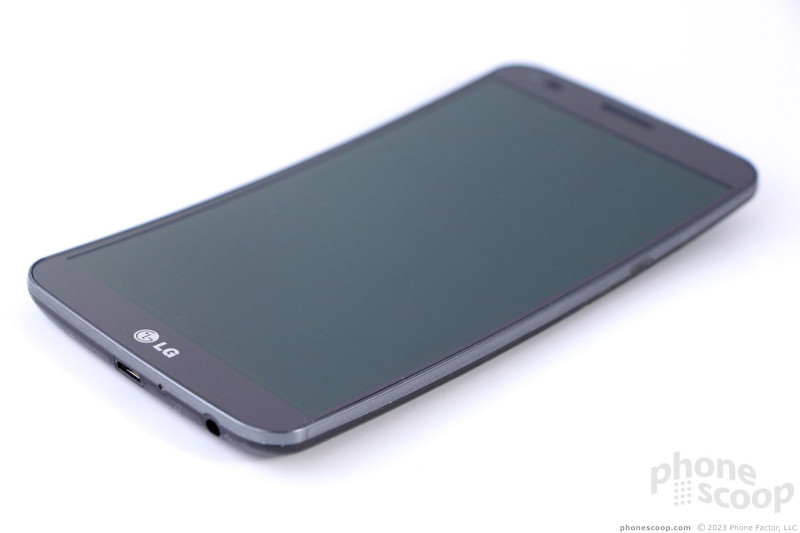
















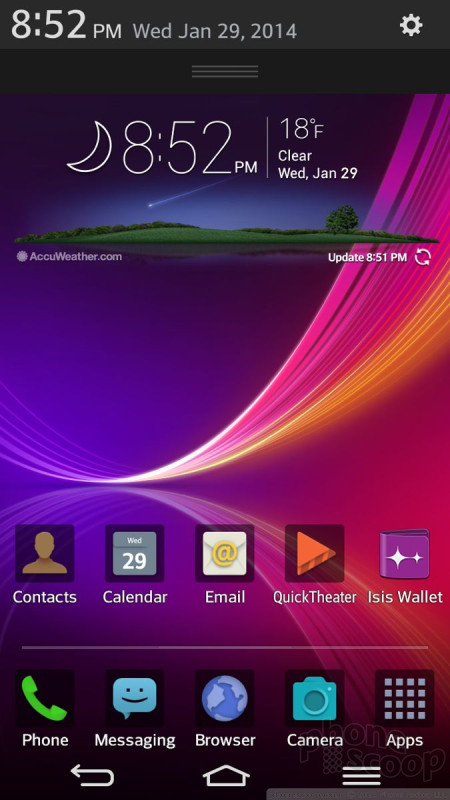











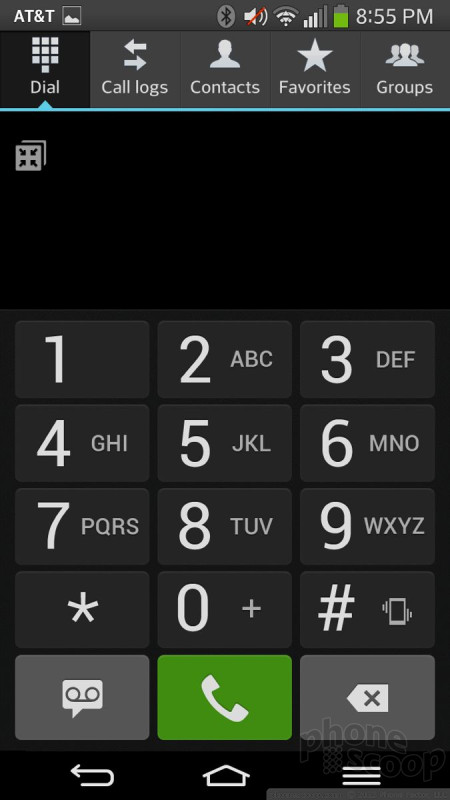




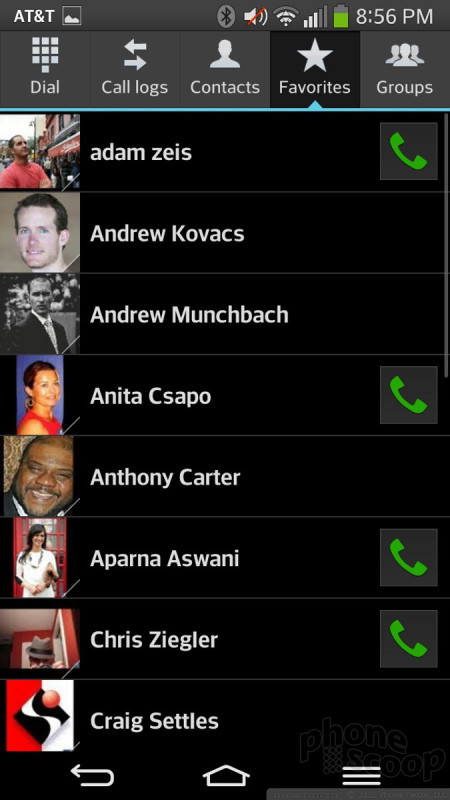


















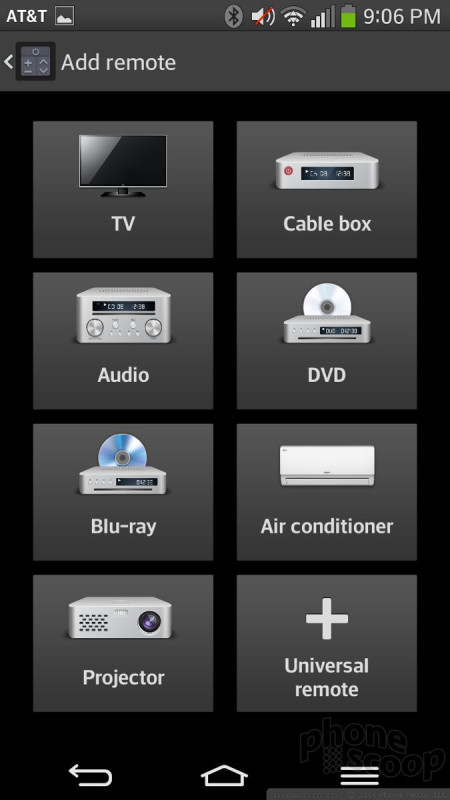








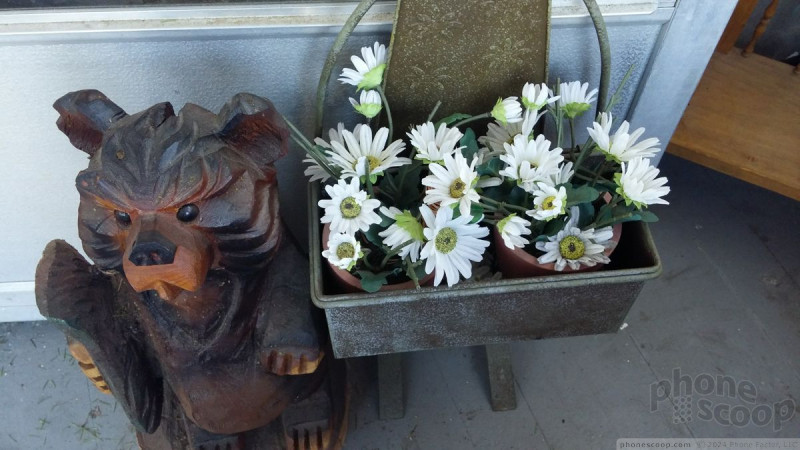























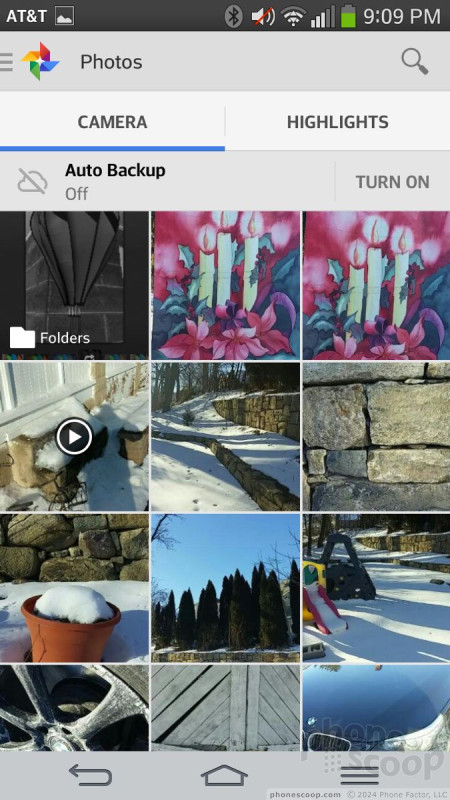




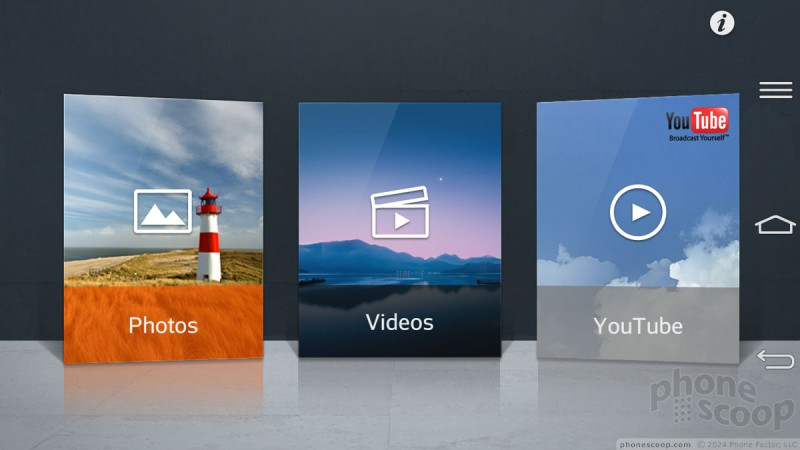









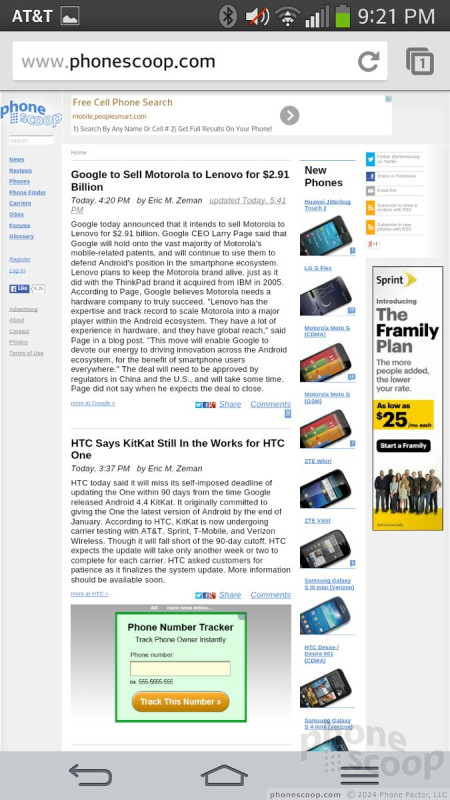







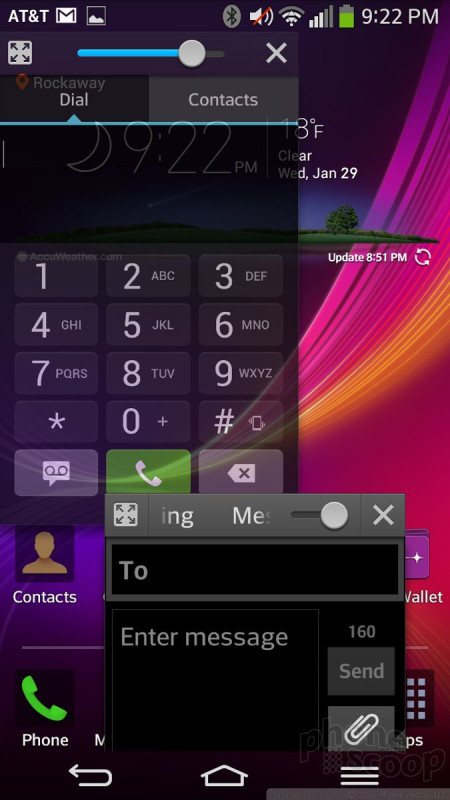




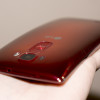 Hands-On with the LG G Flex 2
Hands-On with the LG G Flex 2
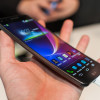 Hands On with the LG G Flex
Hands On with the LG G Flex
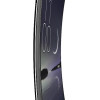 AT&T to Sell LG G Flex
AT&T to Sell LG G Flex
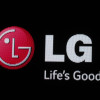 Liveblog: LG Press Conference
Liveblog: LG Press Conference
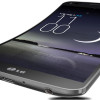 LG G Flex Has a Curved Screen, Self-Healing Cover
LG G Flex Has a Curved Screen, Self-Healing Cover
 LG G Flex (Sprint)
LG G Flex (Sprint)
 LG G Flex (U.S. GSM)
LG G Flex (U.S. GSM)





